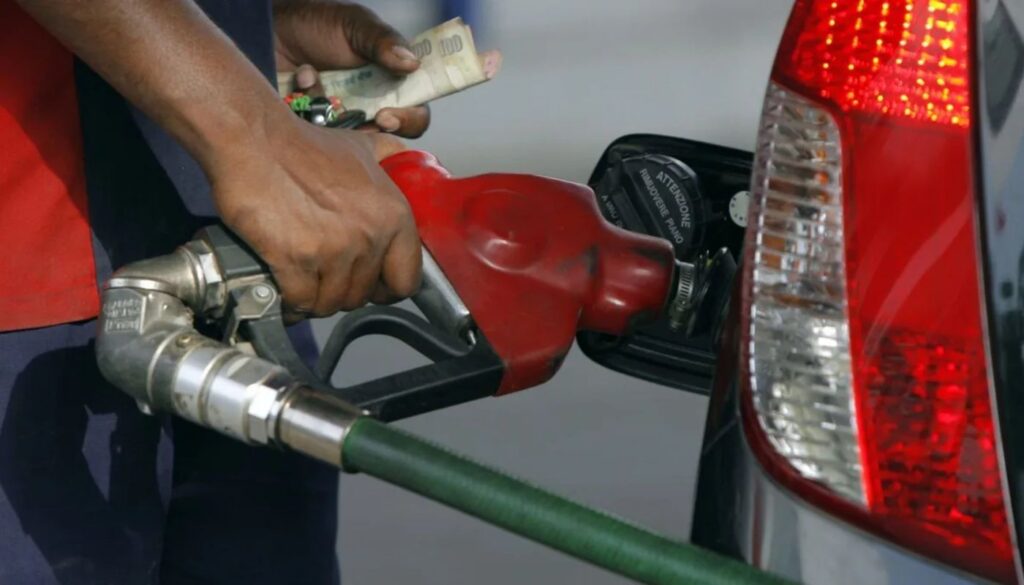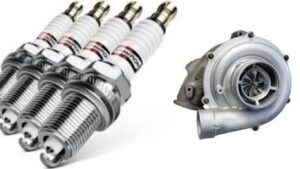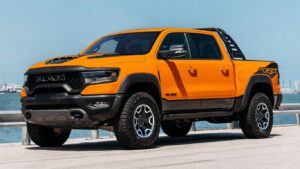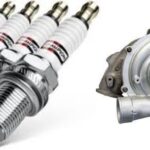For many Americans, the dream of cruising down the sun-drenched roads of Australia, from the bustling streets of Sydney to the rugged Outback, is an alluring prospect.
But before you start imagining yourself behind the wheel Down Under, it’s crucial to understand the nitty-gritty of car ownership costs in the Land of Oz. This comprehensive guide will take you on a journey through the financial landscape of Australian automobile ownership, comparing it with what you’re used to back home in the USA.
The Sticker Shock: Purchasing a Car Down Under
When it comes to buying a car in Australia, prepare yourself for some eye-opening price tags. The cost of vehicles in Oz can be significantly higher than what you’d expect in the States, thanks to a combination of factors including import costs, luxury car taxes, and a smaller market.
New vs. Used: Which Route to Take?
In Australia, as in the US, you’ll face the age-old dilemma: new or used? Here’s a quick breakdown:
New Cars:
- Higher initial cost
- Latest safety features and technology
- Lower maintenance costs in the first few years
- Steeper depreciation
Used Cars:
- More affordable upfront
- Higher maintenance costs
- Potential for hidden issues
- Slower depreciation
Many Aussies opt for used vehicles to sidestep the steep new car prices. In fact, the used car market in Australia is booming, with prices skyrocketing by up to 37% in 2021 due to supply chain issues and increased demand.
Popular Car Brands and Their Prices in Australia
While you’ll see familiar brands like Toyota, Ford, and Holden (GM’s Australian subsidiary until its recent closure), you might be surprised by their pricing. Here’s a comparison of some popular models:
| Model | Avg. Price in Australia (AUD) | Avg. Price in USA (USD) |
| Toyota Corolla | $25,000 – $35,000 | $20,000 – $25,000 |
| Ford Ranger | $50,000 – $75,000 | $25,000 – $40,000 |
| Mazda CX-5 | $35,000 – $50,000 | $25,000 – $37,000 |
Remember, these prices are in different currencies, but even accounting for exchange rates, you’ll notice a significant markup in Australia.
Import Costs and Luxury Car Tax
If you’re eyeing a high-end vehicle, brace yourself for the Luxury Car Tax (LCT). This additional 33% tax kicks in on the amount above the luxury car threshold, which is currently set at AUD 68,740 for fuel-efficient vehicles and AUD 77,565 for others. This tax can add a substantial amount to the price of premium automobiles.
Fuel for Thought: Petrol Prices and Consumption

Once you’ve got your wheels, you’ll need to keep them rolling. Let’s talk about fuel costs in the sunburnt country.
Australian Fuel Prices vs. US Gas Prices
Australians typically pay more at the pump than Americans. As of 2024, the average price of petrol in Australia hovers around AUD 1.80 per liter. To put that in perspective for our American readers:
1 gallon = 3.78541 liters AUD 1.80 x 3.78541 = AUD 6.81 per gallon
Converting to USD (assuming an exchange rate of 1 AUD = 0.75 USD), that’s about USD 5.11 per gallon.
Compare this to the average US gas price, which tends to be lower, often ranging from $2.50 to $3.50 per gallon depending on the state and current market conditions.
Fuel Efficiency Standards
Australia has been slower to adopt strict fuel efficiency standards compared to the US and Europe. However, there’s been a push towards more fuel-efficient vehicles in recent years. The Australian government has proposed new fuel efficiency standards that would bring the country more in line with international norms.
For American drivers used to miles per gallon (mpg), you’ll need to get accustomed to liters per 100 kilometers (L/100km) in Australia. Here’s a quick conversion guide:
- 30 mpg ≈ 7.8 L/100km
- 40 mpg ≈ 5.9 L/100km
- 50 mpg ≈ 4.7 L/100km
The Rise of Electric Vehicles in Oz
Electric vehicles (EVs) are gaining traction in Australia, albeit at a slower pace than in some other developed countries. The government has introduced incentives to encourage EV adoption, including reduced import duties and luxury car tax thresholds for low and zero-emission vehicles.
However, the charging infrastructure is still developing, especially in rural areas. If you’re planning to go electric Down Under, you’ll want to plan your long trips carefully.
Keeping it Rolling: Maintenance and Repairs

Regular maintenance is crucial to keep your car running smoothly on Australian roads, whether you’re navigating city streets or tackling the rugged Outback.
Regular Service Costs
Expect to pay more for car services in Australia compared to the US. A basic service for a medium-sized car might set you back AUD 150-300, while a major service could cost upwards of AUD 500.
Here’s a breakdown of common service items and their approximate costs:
- Oil change: AUD 90-150
- Air filter replacement: AUD 50-100
- Brake pad replacement: AUD 150-300 per axle
- Timing belt replacement: AUD 500-1000
Tire Replacement and Other Common Repairs
Given Australia’s vast distances and varied terrain, tire wear can be a significant factor. A set of four new tires for a standard car might cost anywhere from AUD 400 to AUD 1000 or more, depending on the brand and quality.
Other common repairs and their approximate costs include:
- Battery replacement: AUD 150-350
- Alternator replacement: AUD 400-800
- Radiator replacement: AUD 400-900
DIY vs. Professional Maintenance Culture
While DIY car maintenance is popular in the US, it’s less common in Australia due to stricter regulations and warranty considerations. Many Australians prefer to have their vehicles serviced by professionals to ensure compliance with local laws and maintain warranty coverage.
The Fine Print: Insurance and Registration
Now, let’s dive into the paperwork side of car ownership in Australia – insurance and registration.
Compulsory Third Party (CTP) Insurance Explained
In Australia, Compulsory Third Party (CTP) insurance is mandatory and is often included in your vehicle registration fees. CTP covers personal injury liability for accidents involving your vehicle. It’s similar to the liability coverage required in most US states but focuses specifically on personal injury.
The cost of CTP varies by state and can range from AUD 300 to over AUD 600 per year.
Comprehensive Insurance Costs
On top of CTP, many Australians opt for comprehensive insurance to cover damage to their own vehicle and property. Comprehensive insurance in Australia can be pricey, with annual premiums ranging from AUD 700 to AUD 2000 or more, depending on factors like the car’s value, your driving history, and your location.
“Insurance costs in Australia can be a shock for American expats. It’s not uncommon to pay double or triple what you’re used to back home,” says Sarah Thompson, a US-born insurance broker based in Sydney.
Annual Registration Fees and Roadworthy Certificates
Vehicle registration is handled at the state level in Australia, similar to the US. However, the costs can be significantly higher. Annual registration fees can range from AUD 300 to over AUD 1000, depending on the state and the type of vehicle.
In some states, you’ll also need to obtain a roadworthy certificate (similar to a vehicle inspection in the US) when transferring ownership or re-registering a vehicle. These certificates can cost around AUD 100-200.
Road Trip Ready: Additional Ownership Expenses

Owning a car in Australia comes with a few extra costs that you might not be used to in the US.
Toll Roads and E-tags
Major cities like Sydney, Melbourne, and Brisbane have extensive toll road networks. An e-tag (electronic toll collection device) is essential for frequent drivers. While the e-tag itself is usually free, you’ll need to keep it topped up with credit to use toll roads.
Toll costs can add up quickly. For example, a daily commute in Sydney using toll roads could easily cost AUD 20-30 per day.
Parking Fees in Major Cities
Parking in Australian cities can be expensive. In the CBD (Central Business District) of major cities, expect to pay:
- Sydney: AUD 25-80 per day
- Melbourne: AUD 20-70 per day
- Brisbane: AUD 20-60 per day
Many cities also have strict parking regulations and hefty fines for violations, so always check the signs carefully.
Roadside Assistance Programs
Roadside assistance is a must-have in Australia, given the vast distances between towns in many areas. Popular providers include NRMA, RACV, and RACQ. Annual membership typically costs between AUD 80-150, depending on the level of coverage.
Crunching Numbers: Annual Car Ownership Costs in Australia
Let’s break down the average annual costs of car ownership in Australia:
| Expense Category | Estimated Annual Cost (AUD) |
| Fuel | 2,000 – 3,000 |
| Insurance | 1,000 – 2,500 |
| Registration | 300 – 1,000 |
| Maintenance | 500 – 1,500 |
| Parking/Tolls | 1,000 – 3,000 |
| Depreciation | 3,000 – 5,000 |
| Total | 7,800 – 16,000 |
These figures can vary widely based on factors like the type of car, location, and driving habits. However, it gives you a ballpark idea of what to expect.
Alternatives to Car Ownership in Australia
Given the high costs of car ownership, many Australians, especially in urban areas, opt for alternatives:
- Public Transportation: Major cities have extensive public transport networks, including trains, buses, and trams.
- Car Sharing: Services like GoGet and Car Next Door allow you to rent cars by the hour or day.
- Cycling: Many Australian cities are becoming increasingly bike-friendly, with dedicated cycle lanes and bike-share programs.
- Walking: Australian cities often have walkable neighborhoods, especially in inner-city areas.
Tips for Americans: Navigating Car Ownership in Australia

- Understand Local Regulations: Familiarize yourself with Australian road rules and regulations, which can differ significantly from those in the US.
- Budget for Unexpected Costs: Always have a buffer in your budget for unexpected repairs or fee increases.
- Consider Fuel Efficiency: Given the higher fuel costs, a fuel-efficient vehicle can save you significantly in the long run.
- Shop Around for Insurance: Insurance premiums can vary widely, so it pays to compare quotes from multiple providers.
- Learn the Metric System: Australia uses kilometers, not miles, so get used to thinking in metric for distances and fuel efficiency.
Conclusion: Is It Worth It?
Car ownership in Australia comes with significant costs, often higher than what you’d expect in the US. However, the freedom to explore this vast and beautiful country on your own terms can be priceless. Whether it’s worth it depends on your lifestyle, location, and travel aspirations.
If you’re living in a major city with good public transport, you might find it more economical to use alternatives. But if you’re dreaming of road trips through the Outback or along the Great Ocean Road, having your own set of wheels could be the key to unlocking unforgettable Australian adventures.
Remember, the joy of cruising down a sun-drenched coastal highway or navigating the rugged terrain of the Red Centre might just outweigh the costs for many. After all, some experiences are truly priceless.
So, are you ready to rev up your expenses and hit the Australian roads? The adventure of a lifetime awaits.
As the founder of TrustArmorInsurance, [Admin] the site in 2024 to offer reliable insurance solutions with a focus on trust and security. With a commitment to providing top-notch coverage and personalized service, TrustArmorInsurance aims to meet diverse needs with integrity and professionalism.











